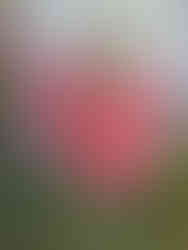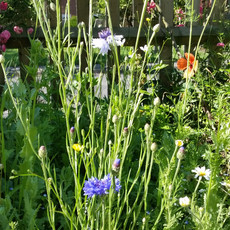Lovely Lavender
- Clare
- Jun 27, 2020
- 4 min read
It only seems like yesterday that I was writing about the Spring Equinox and so I can hardly believe that we have already passed the Summer Solstice and the longest day. Summer is definitely upon us and it has brought the lovely scent of lavender wafting into our garden. The sight of these little blue flowers with their punchy fragrance always brings back memories of a lovely holiday that my husband and I spent with his family in Southern France some years ago. In actual fact, the holiday ended in a trip to hospital after I fell off a horse during my first foray into pony trekking, but overall the holiday, and the associated memories, are good ones!

We have several blue/purple lavender varieties in our garden, from the darker 'Hidcote' variety (Lavandula angustifolia 'Hidcote'), through the paler 'Munstead' to the larger and more strongly scented Lavandula x intermedia 'Grosso'. I find it hard to choose a favourite, though I am a sucker for scent and therefore tend to err towards the varieties that are bred for this purpose. In our old house and garden, we dedicated one border solely to roses and lavender and I think this is a combination that's hard to beat in midsummer.
The word "lavender" is believed to come from the Latin word "lavare" meaning "to wash" and there are many historical references to the plant. It was highly prized in ancient Rome for its strong perfume, culinary uses and medicinal properties and was used by ancient Egyptians in their mummification process. The Elizabethans believed that disease was spread by "bad smells" and people of this era used lavender to perfume their clothing and bedding, as an insect repellent and even to ward off ghosts. Queen Elizabeth I is said to have demanded lavender conserve at her daily table and fresh lavender flowers throughout her royal residences. In more recent history, traditional lavender perfumes decreased in popularity and became known as a scent favoured only by elderly aunts and grandmothers. However, the plant and its oils seem to have undergone a resurgence and nowadays they are used diversely as (for example) an insect repellent (despite the plant being loved by bees), an antiseptic and an aid to relaxation.
I always aim to collect some of the stems from our own lavender plants before the flowers have fully opened and use the dried buds to make little lavender cushions and also lavender sugar which (I think) adds a lovely flavour to shortbread. I am happy using my own dried lavender in the kitchen, but Bart Spices also produces "culinary" lavender, or larger quantities can be purchased from Amazon. If you are picking your own lavender from the garden, Lavandula augustifolia varieties, such as 'Munstead' and 'Hidcote' are generally considered best for cooking.
To make lavender sugar, you simply mix caster sugar with a quantity of dried lavender buds. You might need to experiment with quantities to get a mix that is right for you, but I use about 8 tablespoons of dried lavender to 1 kg sugar which makes quite a strong mix. After storing for a couple of weeks in a sealed jar, with the occasional gentle shake to mix, the sugar should be flavoured enough to cook with.
If you are looking for recipes to try with lavender, Vanessa Kimbell has a great selection in her book "Prepped!", including recipes for lavender shortbread and lavender bread. NB its worth noting that, like other foods, some people do display an allergic reaction to lavender.
Speaking of food, the following image represents the first carrots and beetroot we have harvested from our garden and (together with the potatoes) formed part of our dinner last night:

Ok, I know they are not the prettiest or largest of vegetables you have ever seen, and I probably shouldn't be quite so proud, but I still get very excited eating food we have grown in the garden and I don't think I could have been more satisfied with the food on my plate!
The few sunflowers we planted are also growing well (my daughter's is currently winning the height contest):

In other parts of the garden, more hollyhock flowers have appeared and the hebes are flowering well. I was watching a bee happily feeding from a hebe flower earlier today when a wasp appeared out of nowhere and ambushed it. I have seen this behaviour before with wasps; they will land on the back of an unsuspecting bee or fly and then decapitate and dissect it with expert precision and speed. I knocked this one off, thus saving the bee, though the wasp was probably collecting food for its own young. Whatever you think of wasps, they are amazing creatures!
The Buddleia and evening primroses have also started to flower. I only have a couple of the latter in the garden at present, but am hoping these will spread. Finally, as illustrated in the following images, the Lavatera is currently a mass of pink.
My little wildflower border is also continuing to flower. Overall, I am pleased with the success of this as a little experiment and hopefully I will be able to collect a variety of seeds to use next year. I had planted some of the wildflower seeds in an old Belfast sink we have in the garden and these have also formed a nice little display in a smaller area. NB In case anyone is interested, the seed mixes I used were purchased from Wilko and Home Bargain and were very inexpensive. I think I will do a little more research for next year, however, and be more selective in what I plant.
Excerpt from Lavender's Blue (Dilly Dilly):
Lavender’s blue, dilly dilly, Lavender’s green When you are king, dilly dilly, I shall be queen
Who told you so, dilly dilly, Who told you so? ‘Twas my own heart, dilly dilly, That told me so.

























Comments